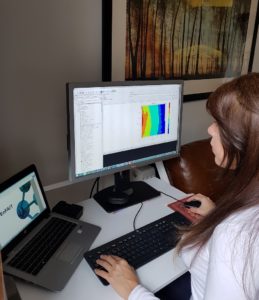By Tianna Bloise-Thomaz, Research Associate in Offshore Renewables, The University of Edinburgh. Tianna is joined by Henry Jeffrey (Senior Lecturer) and Leonore van Velzen (Research Associate) on the University’s EnFAIT team.

The waves and tidal streams that flow around the British Isles represent a colossal source of renewable energy, with estimates showing the UK is home to 50% of Europe’s tidal energy resource and 35% of its wave energy resource. The economic opportunities of capturing this power can be shown in tidal stream energy alone as it is expected to create 23,000 high-skilled jobs and generate a cumulative net benefit of £24 billion by 2050.
The technologies exist for converting marine energy into power for consumers, but time is of the essence if the UK is to harness tidal for its energy transformation and capture this future global market.
The EnFAIT project is on a mission to accelerate the pace of marine energy deployment by proving that the reliability and availability of tidal energy arrays can be increased significantly and that we can reduce the cost of tidal energy by at least 40%.
As part of the EnFAIT project, one of the work packages looks at validating DTOcean (Design Tool for Ocean Energy Arrays) – an ocean energy array modelling tool used to uncover the most effective tidal array layout, reducing costs and improving efficiency. DTOcean was a European collaborative project aimed at accelerating the industrial development of ocean energy arrays by providing a design tool.
The EnFAIT project is using DTOcean for the first time and it is assisting the development and improvement of the second generation of the tool. This is done by considering how DTOcean results compare with the real-life tidal array design and experience from the EnFAIT project.
Collaboration between EU Projects.
This ground-breaking research has enabled a trio of European projects to work together and improve the efficiency of the entire marine energy sector. DTOcean, EnFAIT and DTOceanPlus have collaborated to assess the capability of the design tool and offer over 80 recommendations of where the tool can be improved. To do so, the EnFAIT project shared key learnings with the DTOceanPlus partners through a series of reports and feedback session calls with the DTOceanPlus coders. These key learnings also included two public deliverables (Capability Report and Design Comparative) and five technical notes.
Next steps
With the conclusion of the capability assessment of DTOcean and the verification of DTOceanPlus, the EnFAIT project is to use DTOceanPlus to suggest to Nova Innovation an optimal tidal array layout for their turbines deployed in Scotland.
By the project’s close in 2022, Nova and its partners will have demonstrated a clear cost reduction pathway for tidal energy as well as the ability to apply these learnings and technologies to settings across Europe – putting tidal power firmly at the forefront of our energy transition.

